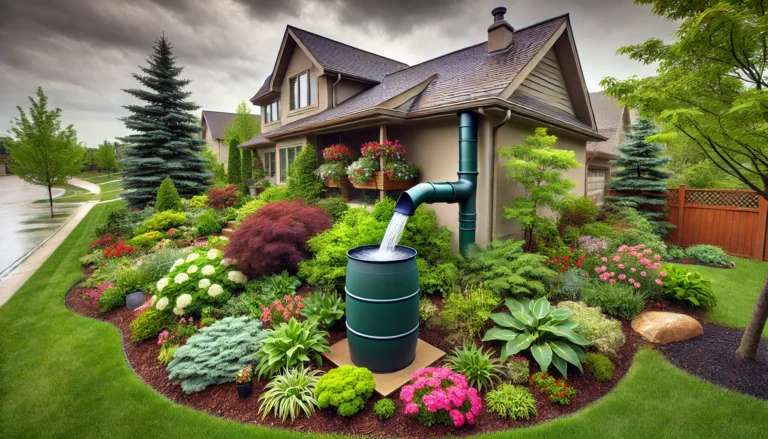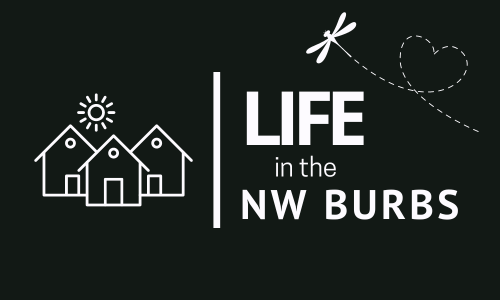Have you ever considered how much water is wasted in your garden? Imagine being able to collect and use rainwater for your plants, reducing your utility bills and conserving a precious resource. Rainwater harvesting is a simple and effective way to achieve this, and rain barrels are the perfect tool to get started. In this article, we’ll explore the benefits, methods, and practical tips for harvesting rainwater, making it a rewarding endeavor for any homeowner.

What is Rainwater Harvesting?
Rainwater harvesting is the process of collecting and storing rainwater for future use. Instead of letting rainwater run off and be wasted, it is captured and stored in containers such as rain barrels. This water can then be used for various purposes, most commonly for gardening and irrigation.
Benefits of Rainwater Harvesting
Conservation of Water Resources
Water is a limited resource, and conserving it is crucial. Rainwater harvesting allows you to use the water that nature provides for free, reducing the strain on municipal water supplies.
Reduction of Utility Bills
By using harvested rainwater for your garden, you can significantly reduce your water bills. It’s a win-win situation: your plants get the water they need, and you save money.
Environmental Benefits
Rainwater harvesting reduces the demand for treated water, which requires energy and resources to process. It also helps to reduce stormwater runoff, which can carry pollutants into rivers and streams.
Self-Sufficiency
Harvesting rainwater can make you more self-sufficient. During droughts or water restrictions, you’ll have a backup supply of water for your garden.
How Rain Barrels Work
Rain barrels are simple devices designed to collect and store rainwater from your roof. They are typically placed under downspouts, where they capture the water that flows off your roof during a rainstorm. The collected water can then be accessed via a spigot or hose connection at the bottom of the barrel.
Choosing the Right Rain Barrel
Material
Rain barrels come in various materials, including plastic, wood, and metal. Plastic barrels are lightweight and durable, while wooden barrels have a rustic charm. Metal barrels are sturdy but can be prone to rust.
Capacity
The size of the rain barrel you choose will depend on your needs and the amount of rainfall in your area. Common sizes range from 50 to 100 gallons, but larger barrels are available.
Features
Look for features such as a secure lid, a spigot, and a mesh screen to keep out debris and insects. Some barrels also come with overflow valves to handle excess water.
Installing Your Rain Barrel
Location
Choose a location that is convenient for collecting and using the water. It should be close to a downspout and have a stable, level surface to support the weight of the filled barrel.
Connecting to Downspouts
Use a diverter kit to connect your downspout to the rain barrel. This kit will direct water into the barrel while allowing excess water to flow through the downspout.
Securing the Barrel
Ensure your rain barrel is securely positioned to prevent tipping. You may want to elevate it on cinder blocks or a sturdy stand to make accessing the spigot easier.
Maintaining Your Rain Barrel
Regular Cleaning
Clean your rain barrel regularly to prevent algae growth and mosquito breeding. Rinse it out with a mixture of water and vinegar or a mild bleach solution.
Inspect for Leaks
Check your rain barrel for cracks or leaks, especially after heavy use or winter storage. Repair any damage promptly to ensure efficient water collection.
Winterizing
In colder climates, it’s important to winterize your rain barrel. Empty the barrel and disconnect it from the downspout to prevent freezing and cracking.
Using Harvested Rainwater in Your Garden
Watering Plants
Rainwater is ideal for plants because it is free of the chemicals found in tap water. Use it to water your garden, potted plants, and even indoor plants.
Irrigation Systems
Connect your rain barrel to a drip irrigation system or soaker hose for efficient watering. This method delivers water directly to the roots, reducing evaporation and waste.
Composting
Use harvested rainwater to keep your compost pile moist. This helps to accelerate the decomposition process and produce rich, fertile compost.
Safety Considerations
Avoiding Contaminants
Ensure your rain barrel is covered with a fine mesh screen to prevent debris and insects from entering. Avoid using harvested rainwater for drinking, cooking, or bathing.
Preventing Mosquito Breeding
Mosquitoes can breed in standing water. Use mosquito dunks or a tight-fitting lid to keep them out of your rain barrel.
Cost Savings and Environmental Impact
Calculating Savings
Estimate your potential savings by calculating the amount of water your garden needs and the cost of municipal water. Multiply this by the number of months you typically water your garden.
Reducing Carbon Footprint
By reducing your reliance on treated water, you decrease the energy and resources needed for water treatment and distribution, thereby lowering your carbon footprint.
DIY Rain Barrel Projects
Creating your own rain barrel can be a fun and rewarding project. Start with a large plastic drum or barrel, add a spigot, and connect it to your downspout with a diverter kit.
Decorating Your Barrel
Personalize your rain barrel by painting it to match your garden or house. Use weather-resistant paint and stencils for a unique look.
Rainwater Harvesting Regulations
In the NW suburban Chicago area, rainwater harvesting is generally legal, but there are specific guidelines and potential permit requirements to consider.
Guidelines and Regulations
Rainwater harvesting is permitted in Illinois, but the state has established certain regulations to ensure safe and responsible water collection and use. Specifically, the Illinois Plumbing Code requires permits for systems that interact with potable water supplies. If your rainwater harvesting system includes elements like cisterns or plumbing intended to supply household water, you must secure a permit and ensure your system meets health and safety standards (Rain Harvest Pro) (World Water Reserve).
Local Considerations
Local ordinances may impose additional requirements or restrictions. For example, Homeowners Associations (HOAs) might have rules regarding the size, location, and visibility of rainwater tanks and barrels. It’s crucial to check with your local municipal office or HOA to understand any specific regulations that may apply to your property (Enduraplas Liquid Mgmt).
Practical Steps
- Check Local Laws: Start by checking with your local government to understand any specific guidelines or permit requirements in your area.
- Obtain Necessary Permits: If your system will be used for anything beyond basic irrigation, such as integrating with household plumbing, ensure you obtain the required permits.
- Comply with HOA Rules: Review and comply with any HOA rules regarding the placement and size of rainwater harvesting equipment.
By adhering to these guidelines, you can legally and effectively implement a rainwater harvesting system in your NW suburban Chicago home, contributing to water conservation and potentially lowering your utility bills.
Common Myths About Rainwater Harvesting
Myth 1: It’s Illegal Everywhere
While some places have restrictions, rainwater harvesting is legal and encouraged in many areas. Check your local laws to be sure.
Myth 2: It’s Too Expensive
Rain barrels can be quite affordable, especially if you make your own. The initial investment pays off in water bill savings.
Myth 3: It’s Only for Rural Areas
Urban homeowners can benefit from rainwater harvesting just as much as those in rural areas. Any home with a roof can collect rainwater.
Success Stories: Real-Life Examples
Home Gardeners
Many home gardeners have successfully used rain barrels to reduce their water bills and maintain lush, healthy gardens. Their stories are a testament to the effectiveness of rainwater harvesting.
Community Projects
Some communities have implemented rainwater harvesting projects in public spaces, such as parks and community gardens, to promote sustainability and conservation.
Conclusion
Rainwater harvesting is a simple, cost-effective, and environmentally friendly way to conserve water and reduce your utility bills. By installing a rain barrel in your garden, you can make a positive impact on the environment while enjoying the benefits of free, natural water for your plants. Whether you’re an experienced gardener or just starting out, rainwater harvesting is a practice worth adopting. Start collecting rainwater today and enjoy the many benefits it brings!
FAQs
1. Can I drink the water collected in my rain barrel?
No, it’s not recommended to drink water collected in a rain barrel. It may contain contaminants from your roof. Use it for irrigation and other non-potable purposes.
2. How much rainwater can I collect?
The amount of rainwater you can collect depends on the size of your roof and the amount of rainfall. For example, a 1,000-square-foot roof can collect about 600 gallons of water from one inch of rain.
3. Do rain barrels attract mosquitoes?
Rain barrels can attract mosquitoes if not properly covered. Use a fine mesh screen or mosquito dunks to prevent mosquitoes from breeding in your barrel.
4. How do I clean my rain barrel?
Clean your rain barrel with a mixture of water and vinegar or a mild bleach solution. Rinse thoroughly to remove any residue.
5. Is rainwater harvesting legal in my area?
Rainwater harvesting is legal in many areas, but it’s important to check your local regulations for any specific guidelines or restrictions. Contact your local government office for more information.

